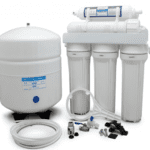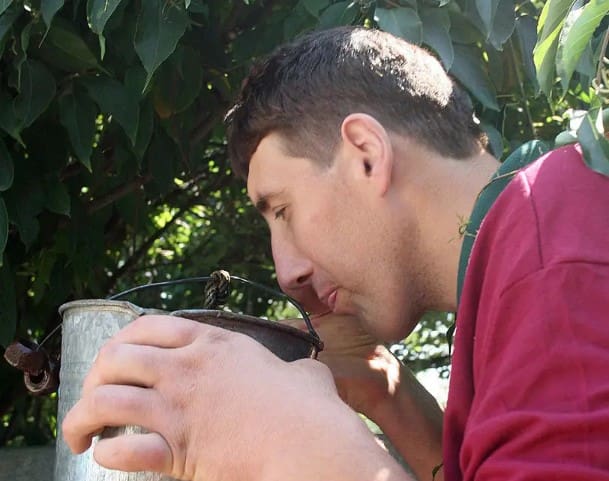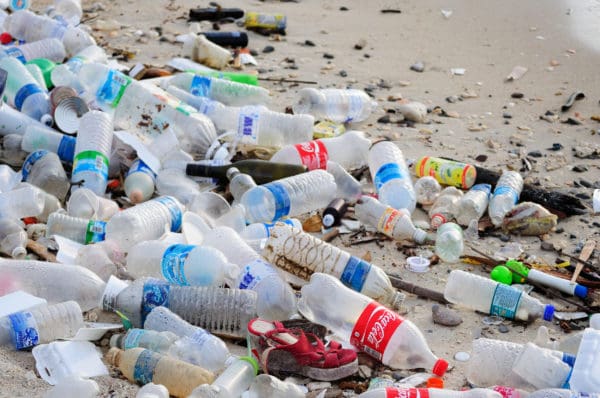

What is a Reverse Osmosis Water Filter?
Reverse osmosis has also become the water purification method of choice for drinking water in many households and bottling plants throughout the world. The benefits of reverse osmosis water is that it is the best and most efficient method to get pure and tasty water from polluted and undesirable water


Why purify water?
Children and adults need to drink water. In his book The Seven Pillars of Health Dr Don Colbert warns that we need to drink the right kind of water which is purified water. Dr Christiaan quotes a study done by the University of the Witwatersrand in his book Gesond vir ‘n Leeftyd (Healthy for a Lifetime), where the importance for children to drink purified water is emphasized. The study suggests that a child should drink two glasses of water per day, plus one glass for every 10kg he or she weighs. Because they are growing, children are constantly and naturally dehydrated. Parents should become aware of the volume of water their children drink and educate them about the importance of water. Caffeine in cool drinks may cause attention deficit disorder.
Dr Christiaan warns: “Water is water is water” is wrong. The quality of water is very important and this depends on the dissolved and undissolved solids in water. Unpurified water can also transmit diseases. To chlorinate potable water is the most effective and inexpensive method to disinfect water. But chlorine is also a known poison and for health and environmental reasons should be removed from water before it is consumed. Another interesting report about chlorine in our tap water is from Dr. Mercola titled Is Your Water Safe.
In his informative book New Nutrition, Dr Willem Serfontein cautions: Heavy metals, like lead, mercury and cadmium in drinking water is another source of contamination that should be avoided as much as possible by using only suitably purified drinking water. The subject of chemical pollution from the environment and its health consequences is a vast one and not many of us appreciate its significance. He continues: We must assume that all drinking water is contaminated and therefore the use of a good water filter is a necessity.
What about minerals?
Some people are under the impression that water supplies the body with essential minerals. This is a misconception. We get our minerals from the healthy food we eat and not from water. According to the RDA (Recommended Daily Allowance) supplied by Dr. Willem Serfontein in the abovementioned book our bodies need 800 mg of calcium and 300 mg of magnesium daily. These quantities of calcium and magnesium are not found in tap water and most mineral waters. About 5% of minerals in water are useful to the body, but in such low concentrations that you will need to drink a tub full of water to achieve the Recommended Daily Allowance (RDA)! This means that 95% of these minerals are useless and place the body under stress. Tap water doesn’t contain any vitamins either. Nutrients taken up from food should be transported through the body in pure water. Nature supplies us with water with low mineral content: It is called rain.


What about reverse osmosis water wastage?
Crossflow membrane technology – the technology which reverse osmosis employs – separates an influent stream into two effluent streams known as the permeate and the concentrate. The permeate is the portion of the fluid that has passed through the semi-permeable membrane and is the purified water. The concentrate stream contains the constituents that have been rejected by the membrane. This water is sent to waste. A reverse osmosis system removes what is already in the water. However, this waste water can be utilized for other needs, such as watering plants, flushing toilets, etc. One should keep in mind that the wastage of a reverse osmosis system is much less than flushing a toilet 3 or 4 times a day.
Nobody would argue that the rinsing of veggies before cooking is a waste of water. The same with showering, doing the dishes and laundry. Even watering the garden is not a waste in areas that are not drought stricken.
To drink purified water is not a luxury. The health advantages are worth it for you and your family.
What about plastic bottles?
Americans consumed 13.7 billion gallons of bottled water in 2017 – more than any other beverage by volume – boosting an industry worth $18.5 billion. 67.3% of bottled water sold in the United States is in single-serve plastic bottles. 70% of those plastic water bottles are not recycled. Globally, about 20,000 plastic bottles are bought every second, the majority of which contain drinking water. Learn more in this PBS report.
In 2013, Concord, MA, became the first US city to ban single-serve plastic water bottles, citing environmental and waste concerns. Since then, many cities, colleges, entertainment venues, and national parks have followed suit, including San Francisco, the University of Vermont, the Detroit Zoo, and the Grand Canyon National Park.
Statistics in Canada mimic The US of course in smaller numbers according to our population. The numbers are staggering, and the plastic from not only these bottles but all of our plastic products is strewn through our cities, parks, forests, lakes and oceans. As the plastic breaks down one of the places it is coming back to us is in the food chain. Fish from the ocean are ingesting the plastic and its showing up on the dinner table, not something we should be eating. Pollution from burning fossil fuels, man made chemicals and plastics are really starting to erode our quality of life. It may be up to all of us individually to do what we can now before it becomes to big a problem to solve.


Reverse Osmosis Facts You Need to Know
Filtration is when solid particles are removed from a liquid or gaseous fluid by passing through a filter medium. Water filtration removes or reduces the concentration of suspended particles, bacteria, parasites, algae, and chemical contaminants. However, water filters are different from water purifier as water purifier eliminates almost all harmful toxins.
Important Facts About Reverse Osmosis Filtration
The following are important facts to consider if you have a water filtration system or planning to buy one;
Health protection:
contaminated water can cause extensive health risks, leading to infections, diseases, and other long-term problems. The filter acts as a barrier, eliminating harmful contaminants before the water is consumed.
Improved taste:
water filtration systems can enhance the taste and smell of water by eliminating the chlorine, Sulphur compounds, and other contaminants that contribute the unpleasant flavours and smells.
Elimination of contaminants:
water from various sources contains contaminants like bacteria, viruses, pesticides, and heavy metals. Filtration helps remove impurities, makes it safe for drinking, and reduces the risk of contracting waterborne illnesses.
Protection from chemicals:
water treatment facilities usually use the disinfectants like chlorine to kill bacteria and viruses. The disinfectants react with organic matter to form a disinfectant byproduct and are found in the water—the byproducts cause health hazards to the body.
Cost saving:
having a filtration system at home or workplace eliminates the cost of purchasing bottled water. In addition, this is a better way to reduce plastic waste that is harmful to the environment. Filtered water provides a convenient and environmentally friendly alternative.
Easy maintenance:
water filters use carbon filters that are replaced often. Modern systems are efficient as they can be self-regulated, and the automation and sensors signal if some part needs to be replaced.
Water filtration is one of the most effective ways to ensure you drink clean water. The harmful contaminants in the water have led to more deaths than any other disease. Therefore, it is essential to filter water before drinking, and have many benefits afterwards.
